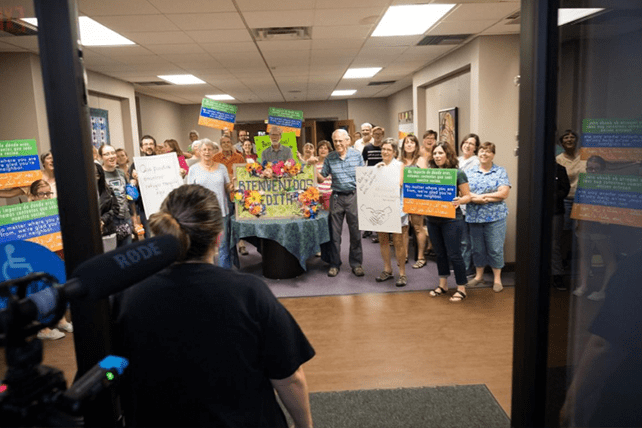In 2021, Secretary of Homeland Security Alejandro Mayorkas updated that policy, making it clear that churches, schools and hospitals (but also playgrounds, childcare centers and emergency shelters) were not just “sensitive locations” but “protected areas” where ICE searches and arrests are discouraged, except in certain cases where there is imminent risk of death or physical harm or a terrorist attack.
Trump’s threat to set aside the policy is chilling the passions felt by many houses of worship for what proved to be a successful tool of resistance.
In public sanctuary cases, churches were upfront about who they were sheltering. They typically held press conferences or issued press releases informing the community — and, critically, ICE — who they were taking in to sanctuary.
“What’s difficult about the public sanctuary is you’re essentially bringing people out in the open into the media,” said the Rev. Noel Andersen, national field director at Church World Service, who helps organize and advocate for sanctuary. “But if that’s not going to help their case, then that’s not necessarily something we want to do.”
It may, however, be too soon to conclude that the protective areas memo will in fact be rescinded, said David Bennion, an immigration lawyer and the executive director of the Free Migration Project.
“I’ve seen some people saying don’t obey in advance, don’t concede before the thing has even been done, and I would apply that to this as well,” Bennion said.
Bennion pointed out that the protected areas policy is not law to begin with, but guidance. ICE’s actions will continue to be informed by political considerations, such as whether the public would support a raid on a church property.
“They’re subject to press and public opinion in a way that they wouldn’t be if this were an actual law or regulation, which it’s not,” Bennion said.
Churches, such as Columbus Mennonite, are now weighing all the options.
Church members embraced their sanctuary recipient, Edith Espinal, a mother of three, and worked around the clock to protect her from deportation. Espinal left sanctuary on Feb. 18, 2021 — as soon as the new Biden administration issued new guidelines stating she was no longer a priority for deportation.

